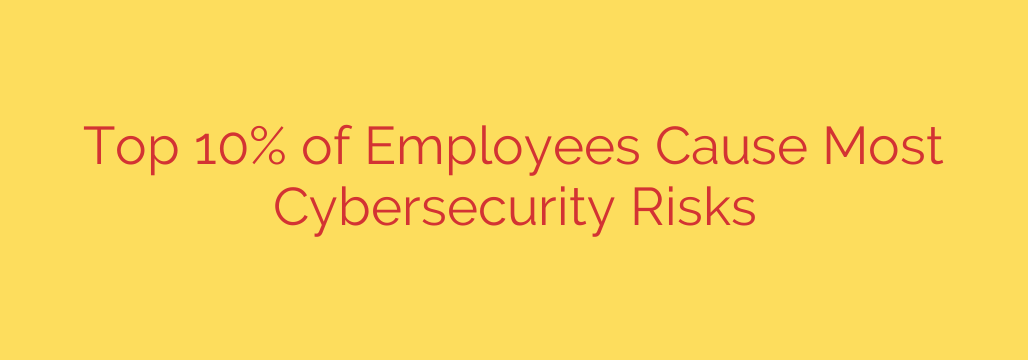
Are Your Top Performers Your Biggest Cybersecurity Risk? The Surprising Truth
It might be time to rethink your cybersecurity strategy. New research reveals a surprising vulnerability: the top 10% of employees are responsible for a disproportionately high percentage of cybersecurity incidents within organizations. This challenges the traditional view that focuses primarily on training and monitoring lower-level employees or those perceived as less tech-savvy.
Why are these high-performing employees creating such risk? The reasons are multifaceted. Often, these individuals:
- Possess elevated access privileges: Their roles frequently require access to sensitive data and critical systems, increasing the potential damage from a security breach.
- Exhibit greater risk-taking behavior: Driven by ambition and a desire to quickly achieve goals, they may be more likely to bypass security protocols or use unapproved software to boost productivity.
- Are targeted by sophisticated phishing attacks: Cybercriminals understand the value of compromising a high-level employee’s account and craft highly personalized, convincing phishing emails to gain access.
This doesn’t mean your star employees are intentionally sabotaging security. More often, it’s a combination of negligence, pressure to perform, and a lack of awareness of evolving threats.
So, what can organizations do to mitigate this risk? Here are some actionable steps:
- Implement role-based access control: Ensure that even high-performing employees only have access to the systems and data absolutely necessary for their roles. Regularly review and adjust access privileges.
- Enhance phishing training: While all employees should receive phishing training, tailor specific training for those in high-risk roles, focusing on advanced and targeted phishing techniques.
- Promote a culture of security awareness: Encourage a culture where employees feel comfortable reporting potential security incidents without fear of retribution, even if they were responsible.
- Implement multi-factor authentication (MFA): MFA adds an extra layer of security, making it significantly harder for attackers to access accounts, even if they have obtained a password. Enforce MFA for all employees, particularly those with elevated access.
- Monitor privileged accounts: Implement robust monitoring and auditing procedures for privileged accounts to detect and respond to suspicious activity quickly.
- Conduct regular security assessments: Regularly assess your organization’s security posture to identify vulnerabilities and weaknesses, including those associated with high-performing employees.
Protecting your organization from cybersecurity threats requires a comprehensive and nuanced approach. Don’t assume that your top performers are inherently secure. By understanding the unique risks they pose and implementing targeted security measures, you can significantly reduce your overall vulnerability. Ultimately, a proactive and well-informed security strategy is key to safeguarding your valuable data and maintaining a resilient business.
Source: https://www.helpnetsecurity.com/2025/07/16/human-cybersecurity-risk-employees/








